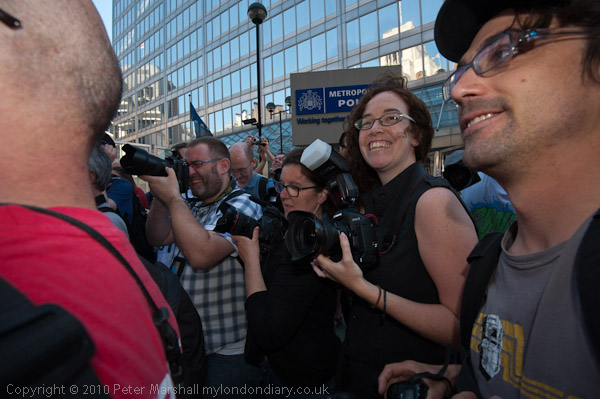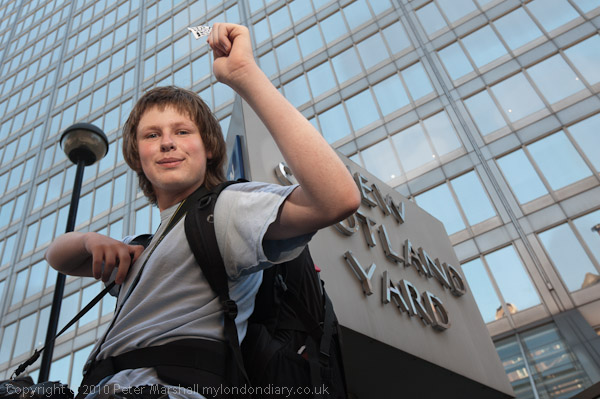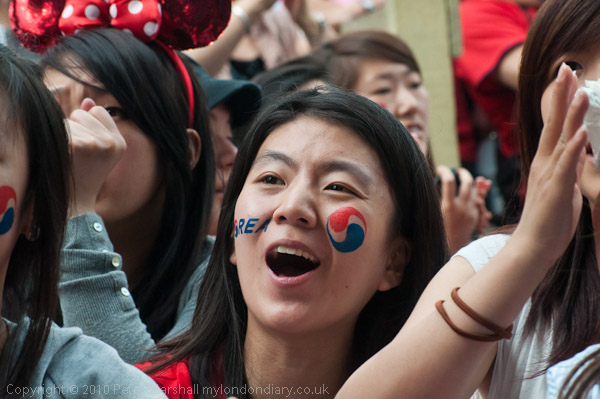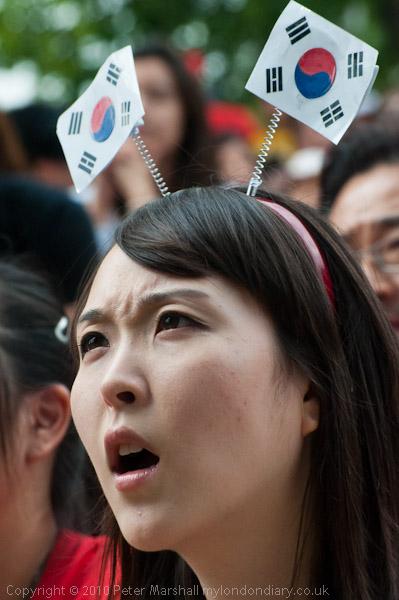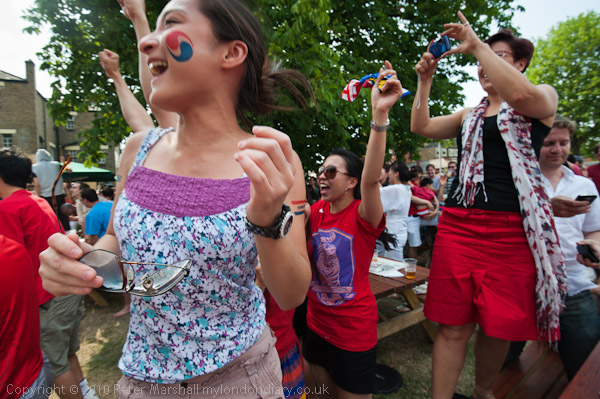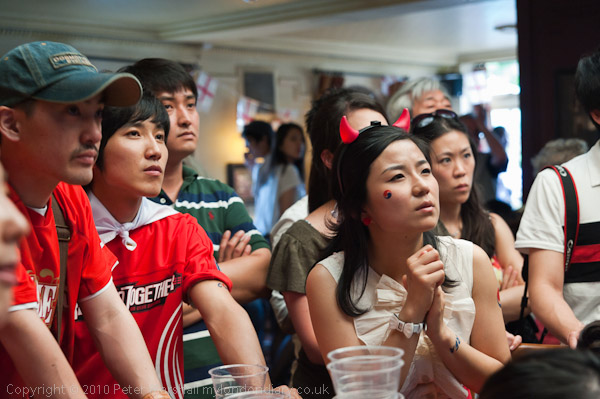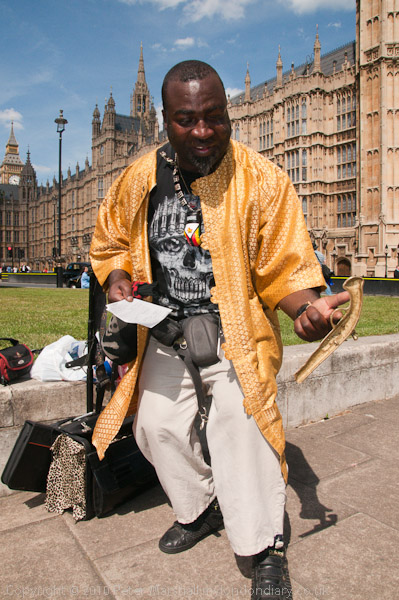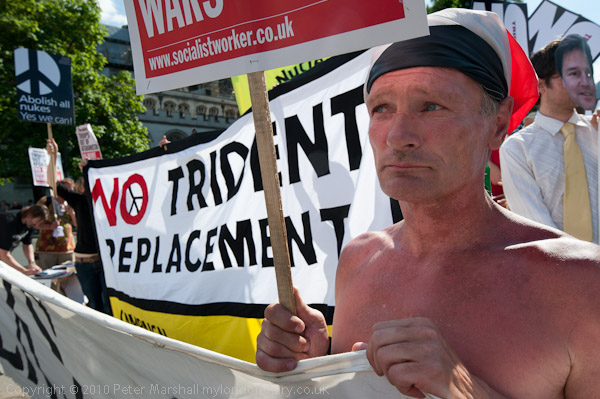Thanks to the New York Times Media Decoder blog you can read the story of how The Economist doctored a cover picture to make it show Obama all alone gazing apparently down at his feet on a Louisiana beach with a handy oil rig in the distance.
The problem is that this isn’t at all what the original photograph showed. Firstly Obama was in a group of three people, one of whom was cropped out and the second, closer to him, retouched away. Almost as significantly, the hazard tape in front of the three and the material in front of them on the beach – which in the original appears to hold his attention – has also been cropped away. For copyright reasons you will have to click on the link above to see the two pictures.
I don’t know what caption the photographer put to his original image, but it could have gone something like “Obama looks at pollution evidence on the beach and consults with US coastguard Admiral Thad W. Allen and local parish president Charlotte Randolph.” The picture used in on the cover would suit a quite different caption, suggesting a lonely and desperate man looking down in despair.
The most depressing and rather frightening aspect of the story is that the deputy editor concerned seems to have no idea of the gross distortion that her decision to change this photograph has caused. She writes “the presence of an unknown woman would have been puzzling to readers.” It seems to show a very low opinion of Economist readers and in fact it was not an “unknown woman” (surely a gratuitously offensive description when we have both her name and photograph), but one with a peculiar relevance to the scene which the image showed, the president of the particular parish in which Obama is standing and on whose beach the oil has landed.
Emma Duncan, deputy editor of The Economist goes on in her e-mail to state “We dont edit photos in order to mislead” when clearly the evidence shows the opposite is true. Either she doesn’t take at all pictures seriously or fails to understand them.
The difference between the two pictures is just like the difference between writing “President Obama was alone on the beach racked by worry about the pollution” and “President Obama visited the beach with the local parish president and a US Coastguard Admiral to see the damage for himself“. I’m sure Duncan would see that those statements were different and that to substitute one for the other was misleading – and it really makes no difference if you do it with pictures rather than words.
The Economist needs to quickly apologise to its readers for misleading them – and also needs to make sure that it leaves the editing of pictures to someone who understand them. They wouldn’t do this kind of thing with words and doing it with images is equally corrosive to their credibility.
